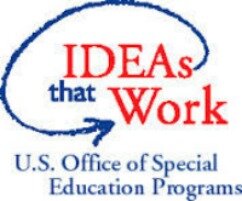The successful transition of students with disabilities from school to post school environments should be a priority of everyone who works with them in secondary education and beyond. This includes parents, teachers, and any other professionals involved in the student's life. The purpose of transition is to assist students with disabilities in building the skills and supports that they need to successfully reach their post-school goals. The 2004 Reauthorization of Individual with Disabilities Education Improvement Act (IDEA 2004) changed transition services to a “results-oriented process” that is focused on improving the academic and functional achievement of the child” (20 U.S.C. ~ 1414 (c) (5) (B) (ii) ). The IDEA also requires the Individualized Education Program (IEP) team to include “appropriate measurable postsecondary goals based upon age-appropriate transition assessments related to training, education, employment, and, where appropriate independent living.” The transition component of the IEP should be developed at the beginning of the IEP meeting immediately after the student’s Present Levels of Academic and Functional Performance.
The state rules for special education require that transition plans be in place prior to the student entering ninth grade or by age 16, whichever comes first. The transition plan drives the content of the rest of the IEP. There should be a clear and direct relationship between a student’s transition goals and the other IEP goals and objectives. Transition requires support from multiple sources for the student and his/her family to make choices, develop connections, and access services.
The state model transition plan, developed by the State, includes:
1. Measurable Post- Secondary /Outcome Goals
2. Preferences, Strengths, Interests and Course of Study based on Present Levels of Performance and Age Appropriate Transition Assessments
3. Measurable Transition IEP Goals
4. Transition Activities and Services
5. The Persons and Agencies Involved
6. The Date of Completion and Achieved Outcomes
Best practices for transition planning should include:
- Transition assessments should be administered prior to the IEP/ transition meeting and a list the student’s preferences, interests, “strengths and needs” based on the results of the assessments must be included in the transition plan
- The student should attend (preferably lead) their own IEP/Transition meeting
- Notice of meeting should be coordinated with the student, family, teachers, and other agencies well in advance to ensure participation
- Written literature and other information to share should be brought to the meeting
- Transition should be discussed thoroughly
- Well written” desired measurable post-secondary/outcome completion goals” should be written covering: Education/Training (required), Employment (required), Independent Living (as appropriate)
- All areas of transition needed for the student to successfully transition to postsecondary options must be addressed
- Goals that are measurable and attainable should be written into the transition plans
- The transition component should “drive” the rest of the IEP
- The progress of each goal should be measurable
- The persons/agencies involved with the attainment of each goal on the plan should be clearly listed
This article was writen by Dr. Lu Nations-Miller, Secondary Transition Specialist, at the Georgia Department of Education, Divisions for Special Education Services and Supports. For additional information, contact Dr. Nations-Miller at .



